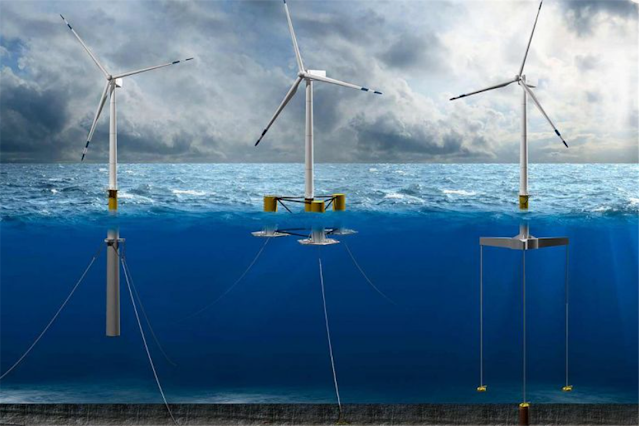The Environmental Impact of Offshore Wind Farms
 |
| Offshore Wind |
Offshore wind farms have emerged as a promising source of
renewable energy, but concerns about their environmental impact persist. As we
strive to transition to a sustainable future, it becomes crucial to assess the
potential benefits and drawbacks of such projects. Let’s explore the
environmental impact of offshore wind farms, shedding light on their effects on
marine ecosystems, wildlife, and the overall ecosystem balance.
- Minimal
Greenhouse Gas Emissions: One of the primary advantages of offshore wind
farms is their ability to generate clean electricity without emitting
harmful greenhouse gases. Unlike fossil fuel-based power plants, these
farms produce renewable energy, contributing to the reduction of carbon
dioxide and other pollutants in the atmosphere.
- Noise
and Vibrations: During the construction and operation of offshore wind
farms, noise and vibrations may be generated, potentially affecting marine
life. However, studies have shown that proper design and implementation of
wind farms, including noise mitigation measures, can minimize these
impacts and reduce disturbance to marine animals, such as whales and
dolphins.
According to Coherent Market Insights, Global
Offshore Wind Market was valued at US$ 41.8 billion in 2022. The offshore
wind market industry is projected to grow from US$ 47.4 billion in 2023 to US$
131.4 billion by 2030, exhibiting a compound annual growth rate (CAGR) of
15.68% during the forecast period (2023 - 2030).
- Potential
Collisions and Displacement: Offshore wind turbines can pose a risk of
collision for birds, particularly during migration. However, thorough
environmental impact assessments and careful selection of wind farm
locations can help mitigate these risks. Furthermore, studies have
suggested that with proper planning, wind farms may even create new
habitats and attract marine life, acting as artificial reefs.
- Cable
Installation and Seabed Disturbance: Laying submarine cables to connect
offshore wind farms to the electrical grid may involve disturbing the
seabed. This can temporarily disrupt the benthic ecosystems and affect
bottom-dwelling organisms. However, research has shown that the long-term
effects are typically minimal, and the ecosystems can recover relatively
quickly.
- Visual
and Landscape Impacts: Some individuals may raise concerns about the
visual impact of offshore wind farms on coastal landscapes and tourism.
However, studies indicate that the acceptance of these structures improves
over time as people become accustomed to their presence, and many find
them visually appealing, appreciating their contribution to clean energy
generation.
While offshore
wind farms have some potential environmental impacts, they are
generally considered a more sustainable alternative to fossil fuel-based energy
generation. Proper planning, site selection, and implementation of
environmental mitigation measures can help minimize these impacts. It is
essential to continue conducting research and monitoring the long-term effects
of offshore wind farms to ensure their sustainable development and minimize any
negative consequences on marine ecosystems and wildlife. By leveraging this
renewable energy source responsibly, we can contribute to combating climate
change while striving to protect and preserve our planet's biodiversity.



Comments
Post a Comment